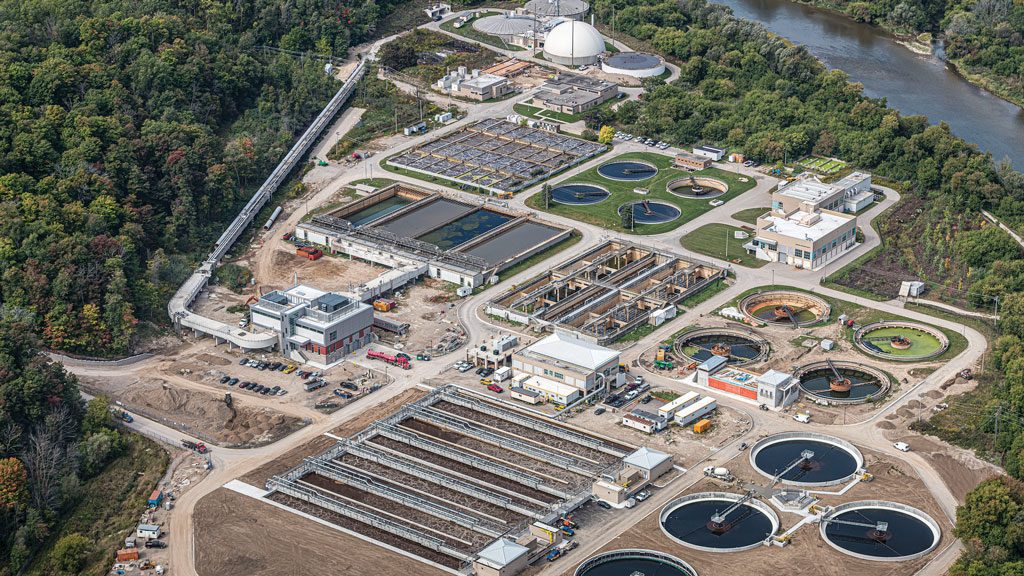In a massive undertaking intended to improve the water quality of the Grand River and reduce odours stemming from a lagoon system, the Region of Waterloo has spent millions of dollars and more than 10 years to improve the performance of its large wastewater treatment facility.
The approximately $350-million upgrade of the Kitchener Wastewater Treatment Plant has gone through three phases — the last of which will come to an end later this year, with a fourth phase now in its early stages.
But that investment is reaping benefits, says Jo-Anne Ing Lagos, the head of the region’s environmental engineering division.
Over the past decade those upgrades “have significantly improved the plant’s reliability, operability and treated water quality that is returned to the Grand River and have also addressed aesthetic issues including reducing the odours.”
The upgrades completed in those first three phases transitioned the treatment plant from a conventional secondary treatment plant to a tertiary treatment process capable of meeting stringent effluent criteria.
More complete organic carbon, nitrogen, phosphorus and solids removal as well as improved disinfection have been achieved and studies by the University of Waterloo have shown there has been a marked improvement in the health of the river’s fish population, she says.
Conducted from 2008-2012, the first phase upgraded the plant’s solids handling process in preparation of for the decommissioning the lagoons and included the construction of a new dewatering centre. The consultant was Tetratech (formerly Hydromantis).
Also starting in 2008 and carrying on into 2013, Phase 2 included improvements to treat centrate and reduce effluent ammonia levels by upgrading the aeration system and the construction of a new aeration building. Other work included the construction of a pumping station and an ultraviolet ultra-disinfection facility. The preliminary and detailed design and services during construction were completed by CH2M Hill.
Commencing in 2010, the third phase included the creation of a facility plan, the conducting of an environmental assessment, the decommissioning of the lagoons, the construction of a new energy centre to provide standby power, and the building of a new headwork’s facility, plus a tertiary filtration building and a new outfall. AECOM was the overall consultant and there was a total of six different construction contracts, says Ing Lagos.
Given the scope, complexity and cost of the upgrades program, the region opted for a design-bid-build delivery model. In order accelerate project schedules, however, it also approved a process where the selected design consultants would also provide consulting services during detailed design and construction administration phases, she says.
In the now underway $73-million, 10-year fourth phase there will be multiple projects, some of which are now in progress. They include a twinned influent sewer channel designed by AECOM and being built by W.S. Nichols and the erection of a co-generation facility. The contractor is W.A. Stephenson and the consultant is a team comprised of Jacobs (formerly CH2M Hill) and CIMA. The other projects have not been tendered, although some are in the early design or pre-design stages, says Ing Lagos.




Recent Comments